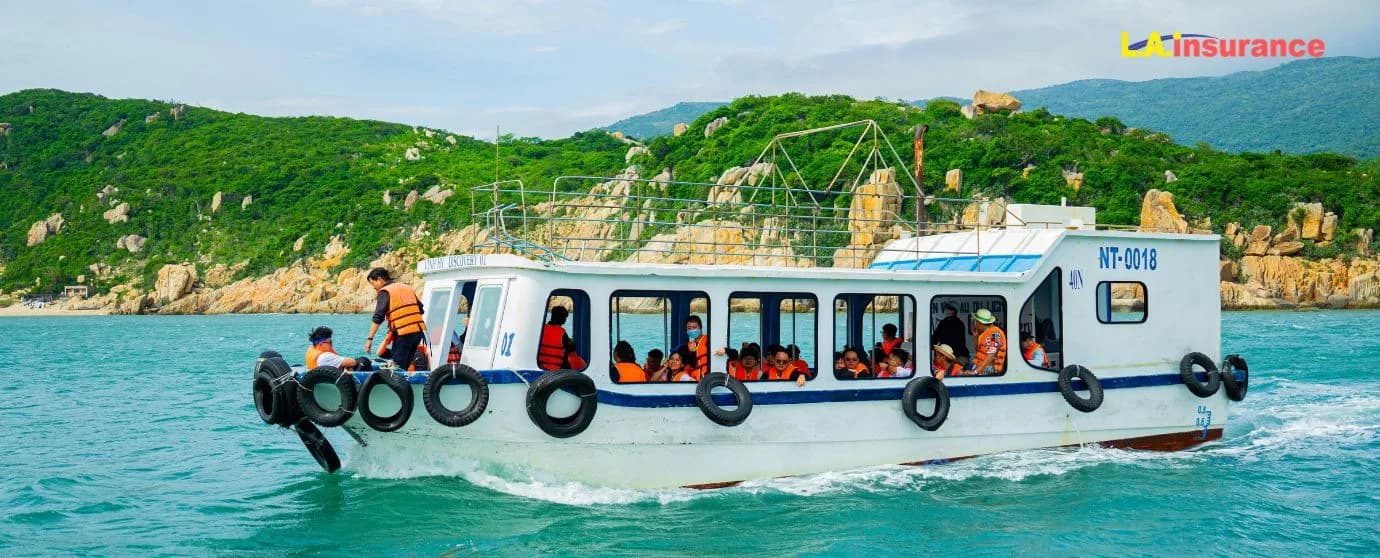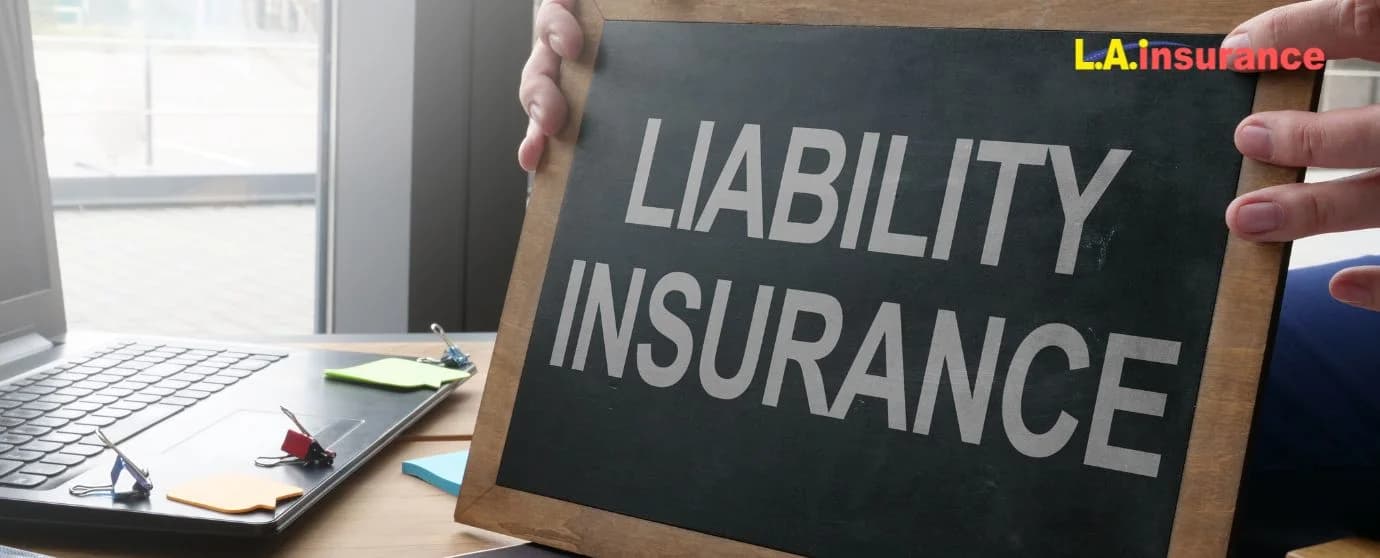
Publish Date: 05-11-2025
Boat & Watercraft Insurance
Last Updated: 16-12-2025
What is a Hull Identification Number?
The hull identification number/HIN is a unique 12-digit boat identification number that’s assigned to every boat built or imported to the U.S. since 1972. The HIN is an identifier number for boats similar to the VIN (vehicle identification number) for cars.
The HIN can be used to identify the boat’s manufacturer, ownership, outstanding loans, boat title, recall history, and even theft recovery. Typically, the HIN is engraved on the boat’s fiberglass or metal plate that’s permanently attached to the boat’s transom, making it a vital reference for owners, buyers, and insurers.
Structure of a Hull Identification Number
The HIN is typically crafted in a structured format, which makes it so easy and convenient to seamlessly identify the boat’s manufacturer, unique identity, manufacturing date, and model year.
For example: in the HIN ABC12345C225
ABC = Manufacturer Identification Code
12345 = Unique Hull Serial Number
C2 = Manufactured in March 2022 (C = March, 2 = 2022)
25 = Model year 2025
In the HIN structure, the months are labeled in alphabetical order, starting from A to L; A is January and L is December. The table below shows the HIN’s month code reference as follows.
Letter Code | Month |
A | January |
B | February |
C | March |
D | April |
E | May |
F | June |
G | July |
H | August |
I | September |
J | October |
K | November |
L | December |
Why is Hull Identification Number (HIN) Necessary?
Just like the social security number is a 9-digit ID for people, the HIN is a 12-digit ID for boats. It serves a critical purpose in establishing the boat’s legal identity, verifying ownership, preventing fraudulent sales, processing warranty claims, and ensuring compliance with federal law.
The HIN is required for several important reasons, starting from boat registration and purchasing insurance to preventing and retrieving a stolen boat. The HIN may seem like generic codes with letters and numbers, but it is actually a powerful tool for tracking and protecting your boat in many situations.
Unique Serial Number to Identify Boat
Every product has a unique serial number that’s used to identify it. For cars, it’s the VIN, for phones it’s the IMEI code, and for boats it’s the HIN. After a boat is built in the U.S., the manufacturer imprints the HIN on the boat’s transom using an authorized Manufacturer Identification Code (MIC) issued by the U.S. Coast Guard. On the other hand, if the boat is imported, it is the importer’s responsibility to obtain the MIC from the U.S. Coast Guard, assign the HIN, and affix the HIN before the boat can be legally sold or operated in the U.S.
Helpful for Tracking Boat Ownership
The HIN creates a unified system for law enforcement officers and insurance agents to track and identify your boat’s ownership on a central database. If your boat gets stolen, you can file a case, and the HIN itself is hardline evidence that you own the boat.
It’s also essential when purchasing boat insurance. Insurers will verify your ownership by running the HIN against registration and title records. A verified match speeds up the approval process and reduces the risk of disputes.
If you’re buying a boat from a private seller or importer, checking the HIN can help confirm that the seller is the legitimate owner, protecting you from unknowingly purchasing a stolen vessel.
Ensures Fraud Protection
One of the major benefits of the HIN is that it can be used to safeguard yourself from fraud. According to NICB reports, about 4,461 boats have been stolen throughout the U.S. in recent years.
Although the number of boat thefts has slightly declined, it is reported that over 500 boats are stolen annually, which means that approximately 6,000 boat thefts occur throughout the country.
Where do all these boats go? They’re mostly sold illegally! So, before purchasing a boat from a private seller, it’s crucial to verify the HIN to identify whether the seller is the original owner; if not, you may unknowingly purchase a stolen boat, which can lead to severe legal consequences.
Additionally, boat fraud isn’t just limited to selling stolen boats; it also involves claiming ‘clean titles’ for damaged boats without disclosing their actual condition. According to Forbes, 36% of boats that are sold on Craigslist were listed with clean titles regardless of having undisclosed damages, and 19% of those boats were purchased from salvage auctions in the past 6 months. Before purchasing a boat, it is essential to cross-check the HIN to verify its owner, condition, and the vessel’s title. If everything checks out fine, you can be confident that it’s a legitimate deal; if not, you know that the seller’s a fraud.
Required for Boat Registration
A Hull Identification Number is a legal requirement for registering a boat in the United States. Whether you’re registering a newly purchased vessel, transferring ownership, or renewing your registration, state boating agencies will require a valid HIN to process the paperwork.
The HIN links your boat to its official records, ensuring that details like ownership, title status, and any outstanding loans are accurately documented. Without a valid HIN, you may face delays, rejection of your registration application, or even penalties for operating an unregistered vessel. For homebuilt or imported boats without a HIN, most states allow you to apply for one through their boating authority or the U.S. Coast Guard before registration can be completed.
Purchasing Boat Insurance
When you apply for boat insurance, the insurer will ask for your boat’s HIN to verify your boating history, the vessels you own, number of accidents or claims you’ve made to evaluate risk factors and offer suitable boat insurance coverage.
Even when you claim insurance, after a boat theft or accident, your insurer will use your boat’s HIN for investigating and processing the claim. So, providing a valid HIN is an essential step to ensure your boat is financially protected with the right insurance coverage.
If you’re looking for a reliable insurance agency offering affordable boat insurance coverage, you should explore L.A. Insurance’s extensive boat insurance policy. Our boat insurance solutions are available across several U.S. states, including Arizona, Colorado, Florida, Georgia, Michigan, Nevada, and Texas.
If you need to purchase boat insurance or would like to know more about the requirements, such as the HIN, consider using our online portal to find an agent nearby, or fill out the contact form for a free quote and consultation today!
Safety Recalls and Warranty
A Hull Identification Number is essential for tracking safety recalls and validating warranty coverage. Manufacturers use the HIN to contact boat owners if a defect or safety issue is discovered, ensuring that affected vessels can be repaired or upgraded promptly.
If your boat is still under warranty, the HIN is used to confirm eligibility and link the repair or replacement request to the correct vessel. Without an accurate HIN on file, you might miss critical safety notices or face delays in receiving warranty service.
By keeping your HIN recorded and up to date with the manufacturer and registration authority, you can make sure your boat remains safe, compliant, and covered.
Legally Required by Federal Law
In the United States, every boat built or imported for sale after November 1, 1972, must have a Hull Identification Number as mandated by the U.S. Coast Guard under federal law. This regulation ensures that all vessels can be uniquely identified for registration, safety, and enforcement purposes.
Operating or selling a boat without a valid HIN can result in fines, registration denial, or other legal penalties. For homebuilt or imported boats that do not have a HIN, owners must apply for one through their state boating authority or directly from the U.S. Coast Guard before the vessel can be legally operated. Keeping your HIN intact, legible, and properly affixed isn’t just best practice; it’s a legal obligation.
How to Get a Hull Identification Number?
Boats that were manufactured before 1972, or have been recently imported, may not have a hull identification number. So, if your boat doesn’t have one, or if it’s missing or damaged, you will have to obtain a new one, especially because it’s a federal requirement to have a valid HIN.
Here’s a step-by-step guide to get a Hull Identification Number as follows.
- Check if your boat was built before 1972, imported, or has a missing or damaged HIN.
- Request the official forms to apply for a HIN from the U.S. Coast Guard or your state boating authority.
- Obtain a Manufacturer Identification Code (MIC) if required for homebuilt or imported boats.
- Prepare the HIN following the standard 12-character format, which includes the manufacturer code, unique hull serial number, certification date, and model year.
- Permanently affix the HIN to the starboard transom using engraving, embossing, or a metal/fiberglass plate, ensuring it is clearly visible and tamper-proof.
- Submit the completed HIN form and proof of attachment to your state boating authority or the Coast Guard for registration.
- Keep copies of the HIN documentation and proof of attachment for insurance, resale, or legal purposes.
Where is the Hull Identification Number Affixed on a Boat?
The hull identification number is generally located on a plastic or metallic plate affixed to the boat’s transom. If your boat doesn’t have a transom, the HIN may be positioned on the starboard near the stern on top of hull side. If you prefer more convenience, you can consider installing a duplicate HIN plate anywhere inside the boat’s interior.
Final Tip: Keep your HIN Recorded and Secure
The hull identification number (HIN) is essential for almost everything, including registering your boat, purchasing insurance, filing an insurance claim, redeeming your boat's warranty, reselling the boat in the future, and even for retrieving your boat if it gets stolen.
Typically, the HIN is your boat’s identification number, and that’s the reason it is essential to keep the HIN properly recorded with its documents secure and readily accessible. Additionally, you can even take a picture of your boat’s HIN to keep a digital backup, which you can easily access on your phone.
Frequently Asked Questions (FAQ)
Where do I find my Hull Identification Number?
The hull identification number is generally affixed on a plastic or metal plate on the boat’s transom, or by the stern on the top hull side. If your boat’s HIN plate has been damaged beyond the point where it's no longer clearly readable, or if it’s missing, you can apply for a new one at your state’s boating authority office.
Is the hull ID the same as the VIN number?
While both are unique identifiers, the hull ID is specifically for water vessels and boats, and the VIN is for on-road vehicles like cars, motorcycles, vans, and trucks.
Do all boats have a HIN?
According to the U.S. federal law, it is mandatory for manufacturers and importers to affix a HIN for selling or operating a boat since 1st November, 1972. Boats that have been manufactured before 1972 may not have one, but in order to use it, you must obtain one. So, as per the legal requirements, all boats do have a HIN, or at least they’re required to.
What if the Hull Identification Number is missing?
If a boat’s HIN is missing, damaged, or illegible, you must obtain a new one from the U.S. Coast Guard or your state boating authority before legally operating or registering the vessel.
Tag :
Boat & Watercraft
boat insurance








